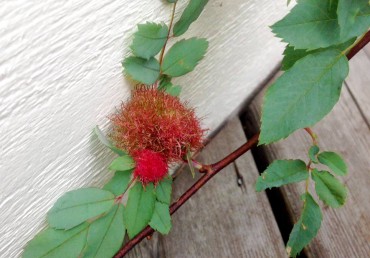
I love plants with interesting foliage, be it the striking color, shape or fragrance. Rosa glauca, with her lovely bluish foliage, captured me the first time I saw it. Its flowers and hips are a bonus, always appreciated for their color and delicate nature.
The flush of bloom is over for the season, so imagine my surprise when I noticed some bright color in the branches! Upon closer inspection, I realized that the intriguing balls of moss-like, red to green growths were a type of gall.
I collected as many as I could reach and made a lovely bouquet of these strange, fascinating growths. My favorite method of integrated pest management is the mechanical removal of a pest before it can reproduce.
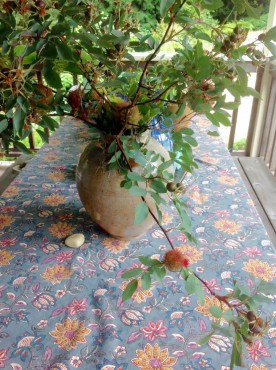
Another important step in managing the health of plants is a good understanding of the pest or disease affecting them. I love a good reason to explore and learn, and I gladly jumped into the fascinating world the cynipid gall wasp, the creator of the mossy rose galls growing on my roses.
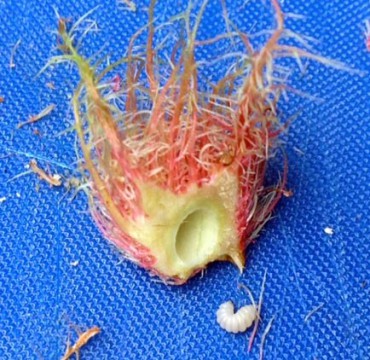
Diplolepis roseae is a small, asexual wasp that lays up to 60 eggs on many of the wild roses as well as the glauca rose. Once the larvae hatch and begin to feed, they secrete plant-growth substances, or cytokinins, that modify the plant tissue.
“The supercharged growth rate of the infected host provides a constant source of nutrition and protection for the invader — a botanical room and board,” Linda Chalker-Scott wrote in her book, “How Plants Work: The Science behind the Amazing Things Plants Do.”
The galls are quite woody and difficult to cut open. The larger ones contain several small chambers, each housing one small larva that will spend almost a year inside, emerging the following spring.
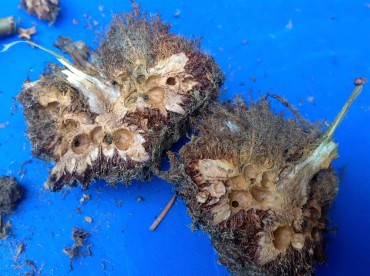
As the larvae feed on the interior gall surfaces, the tissue is constantly renewed. The outer woody layers provide protection from the elements and some predators.
The mossy galls, also known as Bedeguar galls and Robin’s pincussion, can be home to other species of insects as well. Some are harmless inhabitants, called inguilines, while others are hyperparasites, those that prey on other parasites.
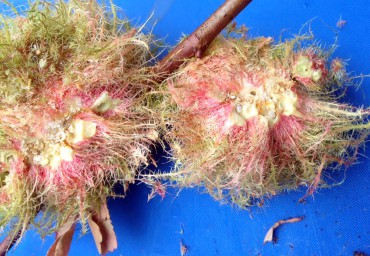
The galls and larvae that inhabit them are mostly harmless to the host plant, unless in very large quantities that could disrupt natural plant functions. Occasionally, a portion of a branch may die back if the gall blocks the flow of nutrients.
In fact, the galls have been considered medicinal and were used to treat colic, intestinal worms, diarrhea, toothaches, baldness and sleeplessness.
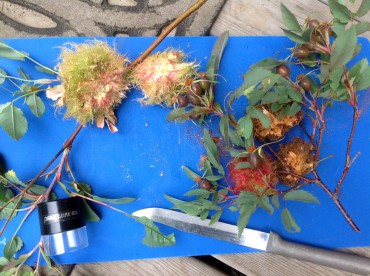
Mossy galls are an intricate ecosystem, created to house and sustain a complex world largely unnoticed by us. It is fascinating that a tiny creature can cause a plant to morph into a highly specialized habitat that will feed and house it just by altering its chemistry.
Humans have come somewhat close by growing trees into specific shapes to fit a certain use, but nothing as specialized as these habitats.
Healthy plants are less susceptible to a heavy infestation, as are shrubs that have not been pruned heavily. Remove galls before the new adults emerge in the spring.
I hope you will look for surprises in your garden, and try to solve the mysteries you discover!























Comments